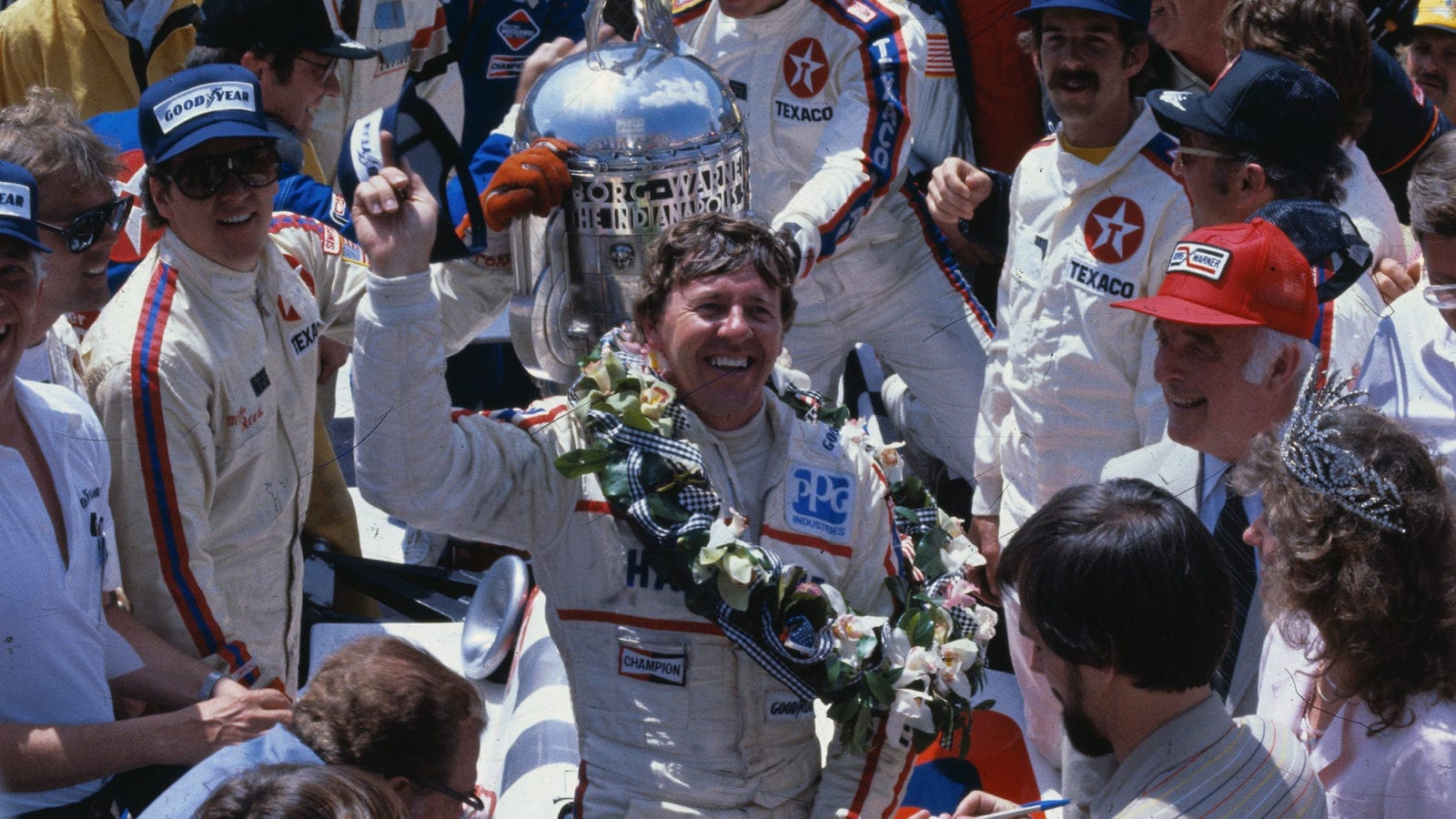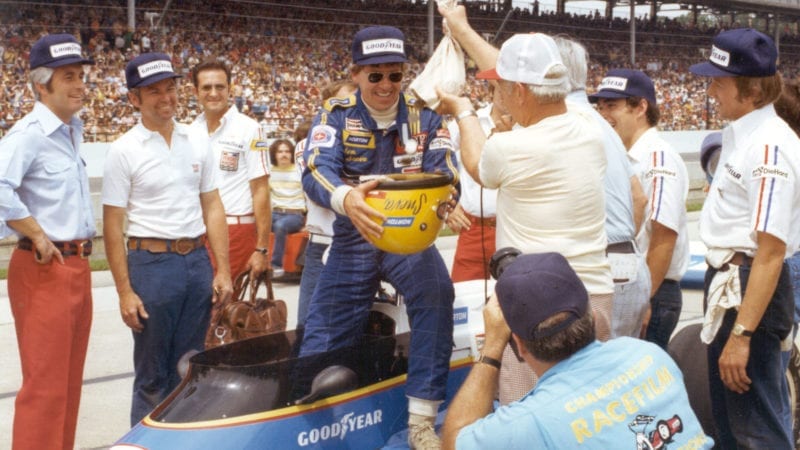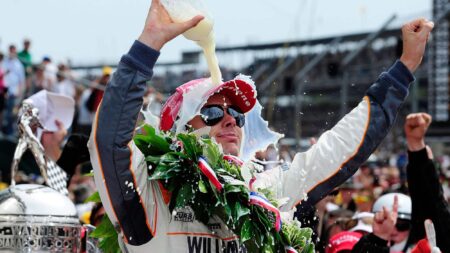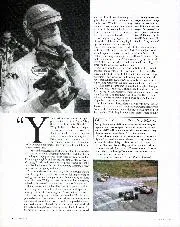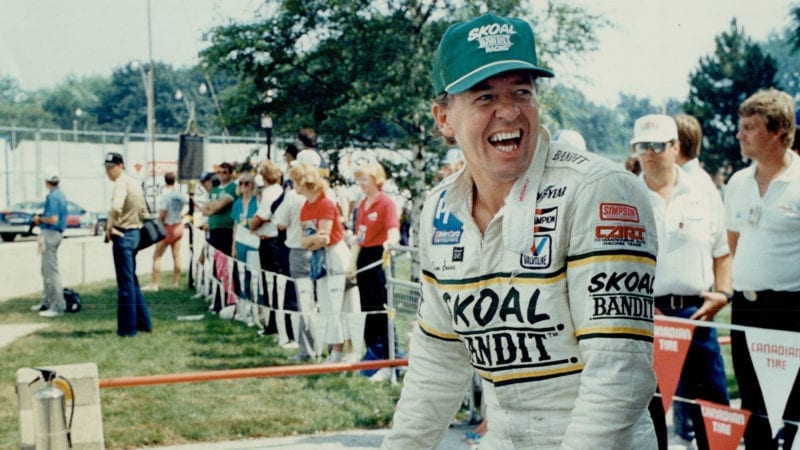Still without the money to buy a ride, Tom wouldn’t race an Indycar again until 1973. The school generously granted him May off to pass his rookie test at Indy, but then pushed him to commit to one career or the other. He chose motorsport.
From being an occasional gun for hire in 1973, his sprint car performances with Carl Gehlhausen that year earned him a full-time ride with Grant King Racing in ’74. The results were poor, but he had the car going quicker than any of his predecessors, with eight top-10 grid slots. When Roger Penske’s regular driver, Gary Bettenhausen, broke his arm in an accident in a dirt race, Sneva was top of his shopping list.
After 1975’s extreme highs and lows, ’76 was a wash-out, two third places being the highlights; no-one involved is sure why, but one possibility was eliminated when Penske replaced his Offenhauser engines with Cosworths for ’77. Sneva won in Texas and Pocono to build the foundations of his first title. He retained the crown in ’78 on sheer consistency. The pace was there — he took seven poles — but amazingly the champion didn’t win a single round!
“We messed up in the pits a few times; little things went wrong,” recalls Sneva, “but what hurt us more than anything was that this was the first full year that Penske ran his own Indycar. We did all the testing in the first car Penske built, but as the A-guy, at the start of the season, I got a fresh chassis, and Rick Mears as the new boy on the team got the test car. Well for some reason the prototype was always better than any of the cars that followed.”

Sneva in the pits on the way to his 500 win in ’83
IMS
Mears, in his sophomore season, chalked up three wins and became Penske’s golden child, while Sneva’s relationship with the Captain turned sour: “There was some inner-squad fighting, partly I think because I wasn’t winning races. Everyone from the crew chief down wanted to protect his own situation so fingers got pointed towards the driver more often than they should have been. For my part, I saw in Penske a team that was about 85 per cent efficient, and my suggested changes weren’t well received by the team. It wasn’t until I went and ran elsewhere that I realised running at 85 per cent efficiency made Roger’s team far more efficient than any other!”
And so Sneva was rewarded for two consecutive championships by being shown the door. Jerry O’Connell’s Sugaripe Prune team offered him a lifeline for 1979, and then a ground-effect chassis, the Phoenix, in ’80. A crash in practice at Indy meant starting the race from 33rd and in the old back-up McLaren, but what followed was a Sneva classic, as he fought through to finish second: “That was my best day at Indy, better even than winning it in 1983. In 1980 we had a small team, our car was several years old, we started last, we maximised the team strategy, the pitcrew did a great job and I think I drove as well as I’ve ever done there.”
It wasn’t until the end of the season — appropriately enough, in Phoenix — that he was able to take the Phoenix chassis’ first victory, despite being jammed in fourth gear from green to chequer, and starting from the back!
